I get a lot of reactions to “Don’t Prep Plots” that basically go like this: “Oh, yeah. I don’t want to railroad my players, but…”
The justification or rationalization which follows the “but” varies. There’s a consistent recognition that roleplaying games aren’t really designed for linear, predetermined plots, but since the vast majority of the media we consume is purely linear (even most of the “interactive” stuff) those creative instincts get buried pretty deep in us.
One of the most common versions of the “but” I hear is, “But I don’t want them to kill my bad guy!” The justifications for this vary from a strictly predetermined “finale” that’s being ruined to the more seductive version of convincing yourself that your players won’t be “satisfied” if the bad guy is “prematurely” knocked off.
These instincts aren’t necessarily wrong: Pulp fiction is filled with scenes where the heroes impotently watch the bad guys escape, building the sense of rivalry between them and baiting our appetite for the finale of the story. It’s an effective trope.
But I don’t think railroading is the only way to achieve that trope at the gaming table. Nor do I think it’s the most effective: When you push your thumb onto the scales of fate in order to predetermine the outcome of your game, you deflate the value of that outcome. If you do it poorly (or simply do it often enough), the anger and frustration of the players will stop being focused on the NPC villain and start focusing on you. The value of the trope becomes depreciated when it’s achieved through artificial ends.
CREATING MEMORABLE VILLAINS
What I recommend instead is a three-pronged approach:
First, build tension between the PCs and the villain without using direct confrontations between them. Give the bad guy minions. Have the bad guy do horrible things to people, places, and organizations that the PCs care about off-screen. Social interactions in situations where the PCs won’t be able to simply shoot them in the head without serious consequences also work well to build a personal relationship. (As do taunting communiques and phone calls.)
Second, when you’re prepping your scenarios include lots of bad guys. You’re probably doing this any way, so the real key here is to simply refrain from pre-investing one of these guys as the “big villain”. Basically, don’t get attached to any of your antagonists: Assume that the first time they’re in a position where the PCs might kill them that the PCs will definitely kill them. (This attitude will help to break any railroading habits you may still be secretly harboring.)
Third, remember that people in the real world usually don’t fight to the death. Have your bad guys run away. And not just your “big villain” (since you won’t have one of those any way): Unless their back is truly to the wall, most of the people your PCs fight should try to escape once a fight turns against them. (If you’re finding it hard to break the “fight to your last hit point” habit, try experimenting with some morale rules.) Most of them will probably still end up with a bullet in the back of their heads, but some of them will manage to escape.
The ones that escape? Those are your memorable villains. Those are your major antagonists.
This is the crucial inversion: Instead of figuring out who your major bad guy is and then predetermining that they will escape to wreak their vengeance, what’s happening here is that the guy who escapes to wreak their vengeance becomes the major bad guy.
MEDIA FAUX-EXAMPLES
Consider Die Hard for a moment. As written, this film is a great example of our first principle: The antagonism between John McClane and Hans Gruber is established almost entirely without any direct interaction between the two of them: Gruber takes McClane’s wife hostage. They talk to each other through telecommunication devices. Gruber sends his thugs to fight McClane elsewhere in the building.
The exception to this is the scene where Gruber pretends to be one of the hostages. This is actually a really clever device that heightens the conflict between McClane and Gruber by allowing them to directly interact with each other. But if this was a game table, what would happen if the PCs saw through Gruber’s bluff and put a bullet through his forehead right then and there?
It doesn’t matter.
Remember our second principle? Lots of bad guys. So now Die Hard becomes the story of the hot-headed Karl Vreski taking control of Gruber’s delicate operation and blowing it up in a mad pursuit for vengeance. Maybe he starts killing hostages and becomes the most memorable villain of the campaign when he throws McClane’s wife off the top of Nakatomi Plaza.
Okay, so cycling through the org-chart of Villains, Inc. works when you’re facing a team of bad guys. But what if the PCs really are just facing off against a single nemesis?
First off, remember that not every challenge needs to be of epic proportions: Sometimes you run into some goblins in the woods and you kill them and you move on. You don’t need every goblin to murder the priestess’ cousin or become the sworn blood-enemy of the paladin.
Second, even the most memorable villains from fiction were often part of Villains, Inc. even when that isn’t immediately obvious. For example, consider Dracula: Wouldn’t it be really unsatisfying if Jonathan Harker sneaked into Dracula’s tomb at the beginning of the book and staked him through the heart before he ever went to England? I mean… this is the Dracula, right?
Remember, though, that Dracula is only the Dracula because that didn’t happen at the hypothetical gaming table. We didn’t know that he would become obsessed with Harker’s wife and kill Mina’s best friend in pursuit of her. We discovered that during play. So let’s pretend that play had gone a different way: Harker stakes Dracula and heads back to England, satisfied that he’s destroyed an ancient evil. It’s a beautiful, happy ending…
… until the Brides of Dracula pursue him to England seeking bloody vengeance.
As a final example, remember that you need to embrace the whole package: You have to allow your bad guys to die indiscriminately and you need to include lots of bad guys in your scenario. If you only prep the “big villains” and then allow them to die indiscriminately, what you end up with are the Star Wars prequels: Darth Maul is replaced by Count Dooku is replaced by General Grievous… and none of them ever achieve enough narrative weight to make you really care whether they live or die.
EXAMPLES FROM THE TABLE
As I’ve mentioned in the past, faux-examples from other forms of media can be useful due to the common understanding of the source material, but can be somewhat misleading because the official version of events from the original media lends a patina of canonicity that shouldn’t be true of actual tabletop scenarios. So let me also take this opportunity to offer a handful of examples from my Ptolus: In the Shadow of the Spire campaign.
SILION: Silion was a cult leader. Using our first principle, I built her up in a variety of ways: Her name was referenced in early foreshadowing. The PCs tangled with her thugs and were targeted for retaliation by her organization. She was also incorporated into the background of a new PC joining the campaign, becoming responsible for murdering the PCs’ family and destroying their village.
Eventually, the PCs managed to track down her lair. They snuck in, found her digging through a box of archaeological artifacts, rolled a critical hit, and put an arrow through the back of her skull. She literally never even got a chance to look them in the face.
My players gleefully tell this story at almost every opportunity. They love it. It’s one of their favorite moments from the entire campaign.
Why did it work? Because when you heavily invest a villain through foreshadowing, the payoff of defeating them is massively satisfying. It can be argued that this sort of thing might not work as well in other media (although consider that Luke’s actual confrontation with the Emperor in Return of the Jedi, after building up to it over the course of three films, lasts almost no time at all), but in a roleplaying game the audience is synonymous with the protagonist. Your players don’t want to be handed their quarry on a plate, but a quick kill shot isn’t a gimme: It’s a reward for all the work that got them to the point where they could take the shot.
ARVETH: Arveth was a mook. She was captured by the PCs, questioned by Tithenmamiwen, and then cut loose. When Elestra tried to sneak back and slit Arveth’s throat to stop her from warning the other cultists, Tithenmamiwen stopped her.
But then the cultists caught up with Arveth: Believing that she had betrayed them to the PCs, they tortured her and even cut out her eye. Eventually concluding that Arveth was still loyal to their cause, the cult gave her a team of assassins and sent her to kill Tithenmamiwen. This was our second principle: Use lots of bad guys and develop the ones who survive. (In some other campaign, Arveth could have easily been cut down randomly during combat and completely forgotten by the next session.)
Arveth nearly succeeded in her assassination attempt before the rest of the party showed up. While the rest of her team held the party at bay, Arveth managed to escape (barely evading Tithenmamiwen’s angry pursuit). This was our third principle: When they’re losing a fight, have your bad guys run away.
At this point, things transitioned to the first principle: Arveth used a magical artifact to send horrible nightmares to Tithenmamiwen (often featuring Arveth cutting out Tithenmamiwen’s eye). She issued threats to Tithenmamiwen’s friends. She placed a bounty on her head.
The PCs would fight her again. This time Arveth was teamed up with a medusa who turned two of the party members to stone. Arveth carved an eye out of each of the statues before making her escape once again.
By this point, of course, the PCs were absolutely furious. Tithenmamiwen, in particular, had a rage which burned so white hot that her alignment shifted: She had shown this bitch mercy and she was repaid with endless torment. I don’t think I’ve ever seen such intense hatred focused towards an NPC before. It reshaped the entire course of the campaign.
Arveth was a mook no more.
When she finally died, the cheers of the players rocked the house. They literally took her miniature as a trophy so that it could never be used in a game again.
WUNTAD: Finally, here’s an example of me breaking (or at least bending) my own rules. Following the scenario laid out in the excellent Night of Dissolution campaign by Monte Cook, Wuntad and a gang of other chaos cultists show up just as the PCs finish clearing out a dungeon. The intention of the scenario is really clear: The PCs have been beat up. Wuntad and his cultists should 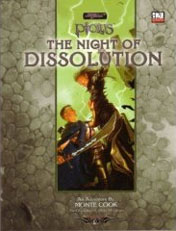 have a really easy time of beating them into unconsciousness and then stealing several key items that the PCs had taken from the dungeon.
have a really easy time of beating them into unconsciousness and then stealing several key items that the PCs had taken from the dungeon.
Stealing the PCs’ stuff? That’s pretty much guaranteed to piss them off for the rest of eternity.
Deliberately designing an interaction to create a major villain is against my “rules”. But it worked.
What I consider the key thing here, however, is that I still wasn’t invested in a particular outcome: Common sense showed that the outcome was likely, but I still wasn’t predetermining it.
What if Wuntad had died? Well, I had reinforced the scenario by following my other design principles: He was supported by lots of bad guys (including Silion from the example above). If he had died, somebody else would have stepped in and taken control of the cults. (Which is not to say that these characters are interchangeable: Killing Wuntad would have made the PCs a major target in the campaign a lot sooner. Factions within the cults probably would have broken away from the new leadership. And so forth.)
Similarly, returning to one of our faux-examples for a moment, common sense tells you that the leader of the terrorists who have taken over the Nakatomi Plaza is more likely to become John McClane’s nemesis than one of his mooks. You don’t have to abandon that common sense in order to follow the principles of RPG villainy.
FURTHER READING
The Railroading Manifesto
Node-Based Scenario Design
Gamemastery 101

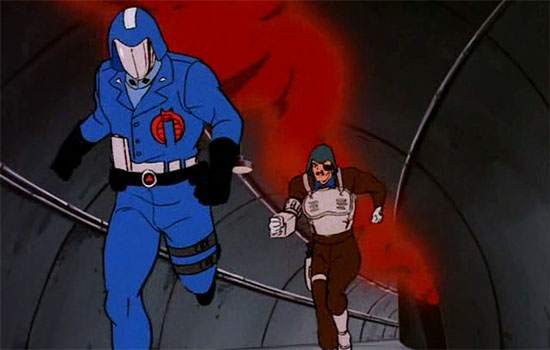
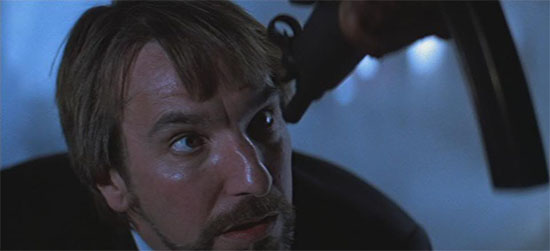
 Every piece of evidence surrounding the authorship of Richard II: Thomas of Woodstock points to one of two truths:
Every piece of evidence surrounding the authorship of Richard II: Thomas of Woodstock points to one of two truths:
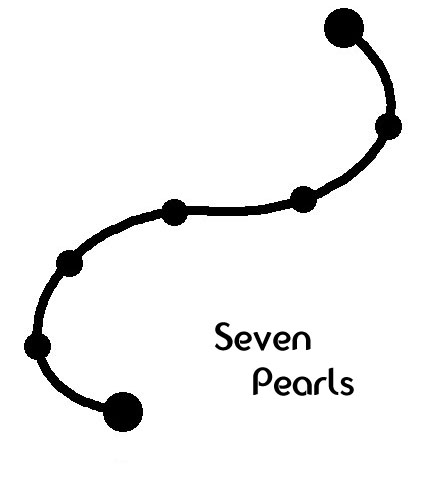
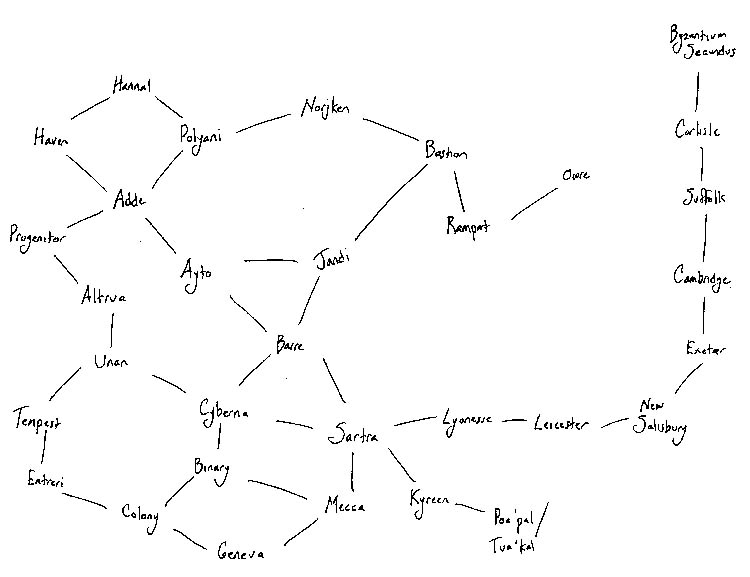
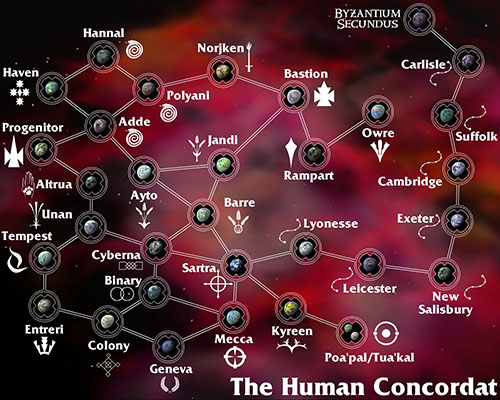
 John Wick’s Review Policy sucks.
John Wick’s Review Policy sucks.









